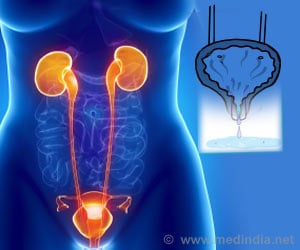The Affordable Care Act and changing economic conditions have encouraged an increase in the integration of physicians with hospitals.

‘The Affordable Care Act and changing economic conditions have encouraged an increase in the integration of physicians with hospitals.’





The paper, "The Integration and De-integration of Physicians and Hospitals Over Time," examines trends in physician-hospital integration at 4,727 hospitals using the 2008-2013 American Hospital Association annual survey data. It designates four forms of integration based on the type of contractual relationship a hospital has with physicians from least to most tightly integrated: independent practice associations, open physician-hospital organizations, closed physician-hospital organizations and fully integrated organizations. The paper was co-authored by Marah Short, associate director of the Baker Institute's Center for Health and Biosciences; Vivian Ho, the chair in health economics at the institute and director of the Center for Health and Biosciences; and Ayse McCracken, president of eNNOVATE Health Ventures. The researchers examined the overall changes in the number and percentage of hospitals engaged in varying forms of physician-hospital integration and the transitions between these integration forms by hospitals over time. Between 2008 and 2013, the share of hospitals with physicians on salary rose from 44 to 55 percent of all facilities. Looser forms of physician-hospital integration, such as joint contractual networks with managed care organizations, decreased in prominence, they found. In all, the authors found 1,525 hospital integration form transitions reflecting a change in the integration form of 1,445 hospitals between 2008 and 2013. They found 599 cases in which a hospital switched from no integration to some form of integration between years. The form of integration with the greatest change is the fully integrated hospitals category, with 710 transitions to fully integrated organization agreements. A majority of this growth comes from the 550 hospitals changing from no integration to a fully integrated organization.
However, the aggregate shift toward tighter integration masks the fact that many hospitals de-integrated or shifted to less tightly integrated physician-hospital relationships during this time period, the authors said. Although the number of hospitals reporting no integration declined by only 110 facilities between 2008 and 2013, there were 489 cases between these two years in which a hospital de-integrated.
"During the time period studied, the optimal direction for hospital-physician integration wasn't clear for either hospitals or physicians," said Ho, who is also a professor of economics at Rice and a professor of medicine at Baylor. "It appears that many hospitals that chose to integrate then de-integrated by 2013."
The authors elaborated on the complexity of the overall shift to tighter physician-hospital integration. "When physicians seek hospital employment, they may expect little change in the way their businesses operate, but shifts in decision-making authority, transparency, electronic health records and practice management systems and HR policies affecting practice staff are among the challenges physicians have to face after integrating with a hospital," McCracken said.
Advertisement
"A hospital seeking to participate as a Medicare ACO must build relationships with primary care physicians (PCP) and will have better control of hospital referrals if these PCPs are hospital employees," Short said. "Physician groups that lack the financial and technical expertise to adopt electronic health records that have increasingly become necessary to obtain higher reimbursements by public and private payers will be the likeliest source of integration in the future."
Advertisement









